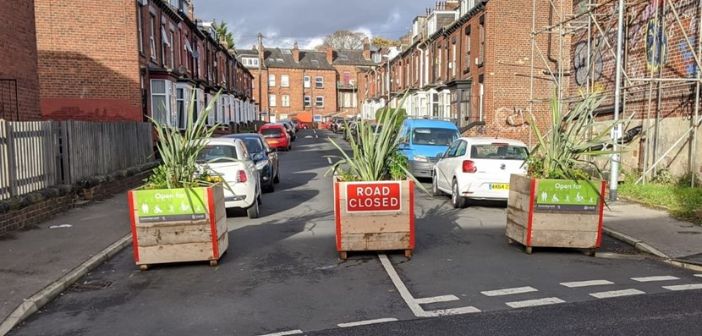Leeds City Council has introduced its first active travel neighbourhoods as it looks to reduce traffic levels and make residential areas more pedestrian- and cycle-friendly.
Intended to discourage rat-running traffic through residential streets, a range of experimental traffic orders will be in place for a minimum of six months.
For example, road layouts across 60 locations will be changed using 120 planters and signs that can be relocated in response to local needs.
While all streets will be accessible for local residents, businesses, deliveries and emergency vehicles, car traffic will be redirected to surrounding distributor roads.
The trial has been implemented under the UK government’s emergency travel measures and will be monitored to see if traffic levels are reduced.
Local residents will be asked for feedback on schemes in Hyde Park and Chapeltown, with responses helping determine whether the trial schemes are amended, retained or withdrawn. An additional scheme in Beeston is also planned.
Councillor Lisa Mulherin, Leeds City Council’s executive member for climate change, transport and sustainable development, said: “We would normally have undertaken extensive local consultation before delivering anything like this on the ground, but the conditions of the government’s emergency active travel funding required councils across the country to submit, design and deliver schemes on the ground in a matter of weeks.
“We are seeking the views of local residents throughout the trial schemes in their neighbourhood based on their experience of them.”





